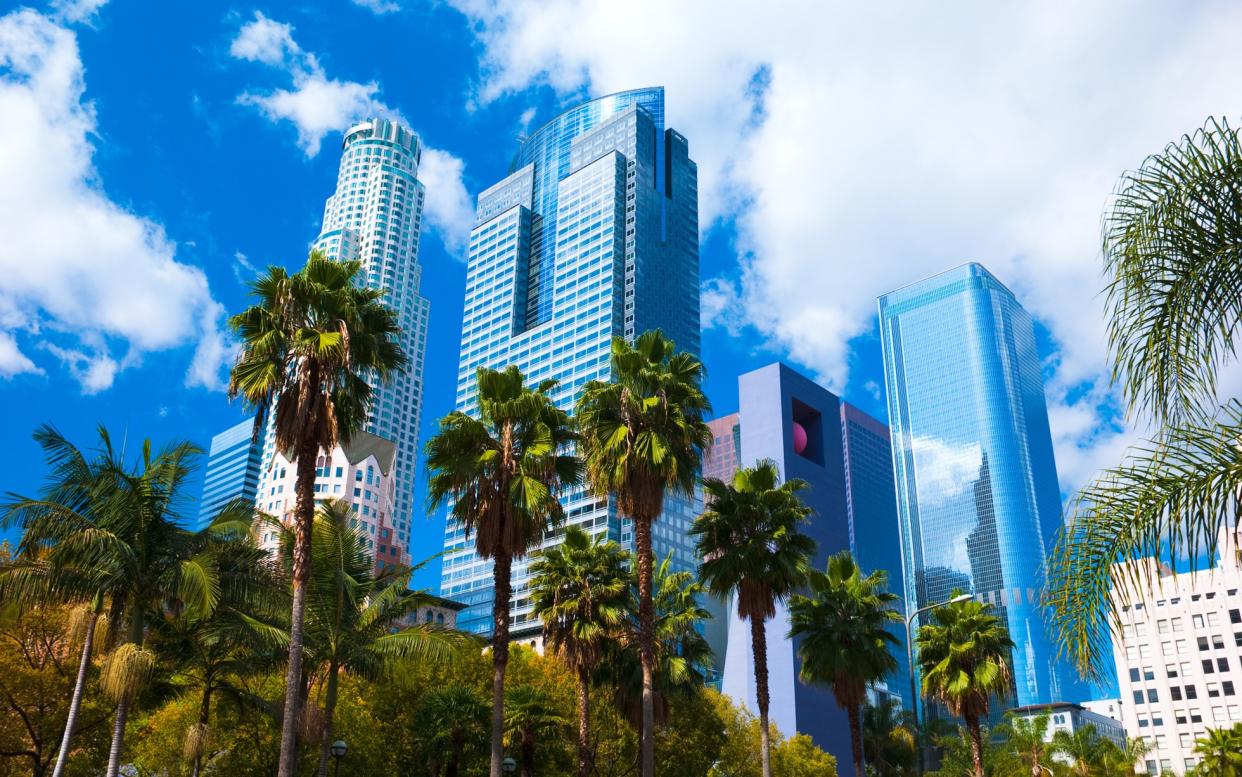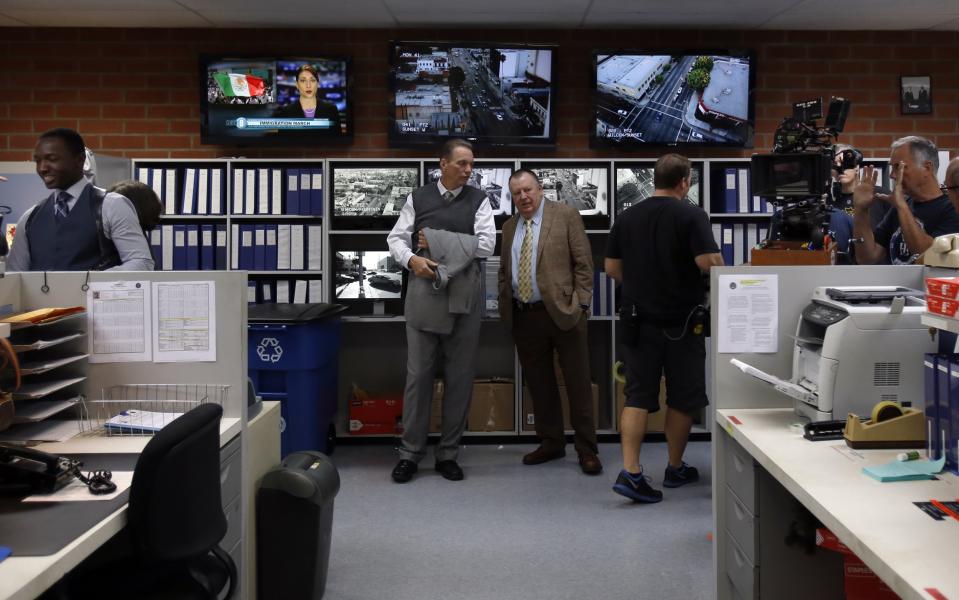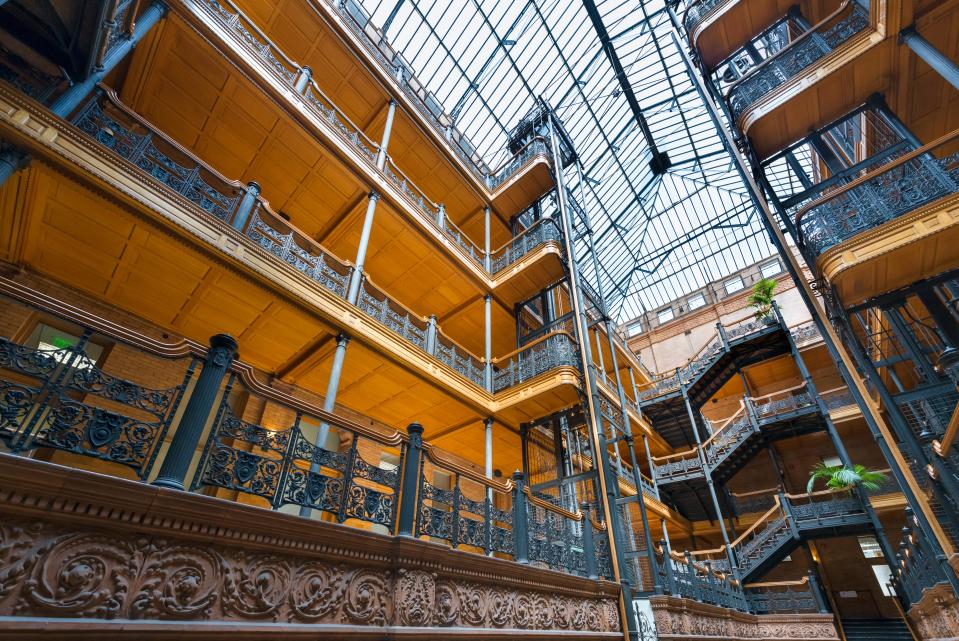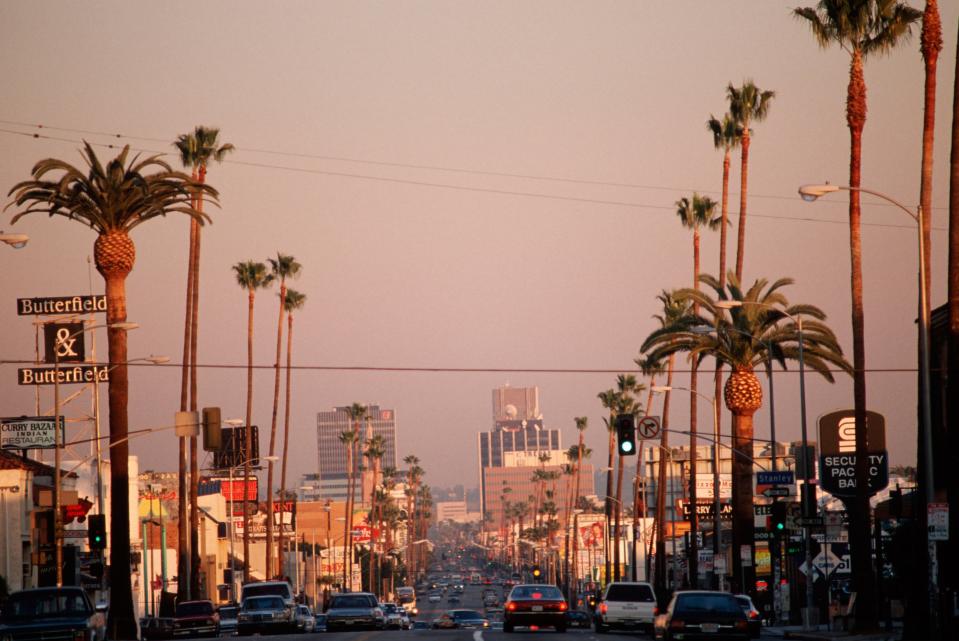A crime tour of the city that never forgets its murder victims

Michael Connelly may just be the greatest contemporary chronicler of Los Angeles. His crime-fiction novels, mostly starring LAPD detective character Harry Bosch, have now sold more than 60 million copies. He has won almost every prize going in the genre. His latest Bosch novel, The Wrong Side of Goodbye, finds the hero in semi-retirement, accepting a case as a private investigator.
There’s more than a passing nod to that earlier chronicler-in-fiction here, Raymond Chandler. The title of the latest Bosch book even echoes Chandler’s last great Philip Marlowe detective story, The Long Goodbye. Fittingly for this town, the Bosch stories are also now being turned into an acclaimed television series, with the third season soon available via Amazon Prime.

While LA is best known for Hollywood and the beach towns (Venice, Santa Monica, Malibu), the day I spend with Michael Connelly in its eastward reaches reveals quite different sides to the city, and no less interesting ones.
We begin at the Pacific Dining Car, a 24-hour restaurant dating back to 1921 – “A swanky steak pit on the edge of downtown… a self-contained time warp in a city of time warps and dark continuums”, goes the description by James Ellroy, another local crime writer best known for LA Confidential and The Black Dahlia.
A city that forgets its murder victims is a city lost
Michael Connelly
The dimly lit eatery is also popular with police top brass and senior serving officers. Joining us for breakfast are detectives Mitzi Roberts and Tim Marcia, who work in the elite Homicide Special Section of the Robbery-Homicide Division, in nearby LA police headquarters. They also look after key unsolved cases. Over eggs and hash browns, Connelly runs past them various scenarios for a new novel featuring a female police protagonist. The goal is to ensure that his characters’ actions ring true.
Blinking back sunlight, I accompany Connelly and the two detectives over to the new Police Administration Building, just the other side of the busy 110 freeway. It’s a strikingly angular structure in which Detective Marcia shows me up to the cold-case storage room and the murder books so familiar from the Bosch stories. Between 1960 and 1996, there were 6,000 unsolved cases, plus another 3,000 cleared ones where the suspects did not face criminal prosecutions for reasons beyond police control. It recalls a strapline from the jacket of my favourite Bosch book, The Closers: “A city that forgets its murder victims is a city lost.”
Detective Marcia is haunted by one cold case in particular – the 1980 murder of Kari Lenander, a teenager from the affluent suburb of Brentwood who never returned home after a night out in Hollywood. It strongly resembles the storyline of The Closers, in which Harry works on an unsolved case involving the Eighties murder of a high-school student. “With retirement looming, it’s becoming more emotional because I realise it’s not about the cases I’ve solved – it’s about the ones I didn’t solve,” Detective Marcia shares. “Those are the cases illuminating that exit sign.”
On our way out of the building, we visit a battleship-grey “war room”, from where key police operations are led. On the wall is Harry Bosch’s name and famous saying: “Everybody counts or nobody counts”. Connelly also points out how the Police Administration Building looks directly across to the newsroom of the neighbouring Los Angeles Times building, where he formerly worked as a crime reporter. (A police chief once ordered the blinds closed.)
The two of us walk out past the Times building – a massive stone edifice from this approach. I ask Connelly whether having strong relationships with serving police officers makes him self-conscious when writing up his stories; not all of the detail is flattering to the police department. “It’s like when I was a journalist,” he replies. “They know I have to present a balanced and realistic picture.” In this potent cluster of landmarks – which also includes the Criminal Justice Center, and City Hall – professionals here recognise and respect the roles that others have to play. Could there be any better store of character-led material for crime fiction?
The 20 best travel books of all time
Next stop is the five-storey Bradbury Building, a strikingly modern-feeling landmark, yet more than a century old, featuring a full-height open interior, dramatic glass skylight, twin open-cage elevators riding up to the roof and decorative brick and tiling work. It also happens to house the headquarters of the LAPD’s Internal Affairs Division, familiar to the sometimes-maverick Bosch.
Innumerable films have been shot here, most recognisably Blade Runner. A day’s shoot now costs $25,000 (£20,000). What fascinates the film-makers so? A handout that Connelly passes me gives clues. Lewis Bradbury, the ageing millionaire who commissioned the building, never witnessed its completion, while the young architect who designed it never conceived anything so significant again. It’s as though this youthful-feeling monument drained the life and creativity of these two men, and perhaps that says something about the elusive and ephemeral quality of the dreams this city cultivates.
A turn of my head locates the seething lights of Hollywood and the city’s low, southward spread. When I look back, the coyote has gone
Our final Downtown stop is the Arts District, in which a key scene from The Wrong Side of Goodbye plays out (no spoilers). The former fruit-processing and storage warehouses, previously occupied inexpensively by artists, have now largely been converted to housing for business people working Downtown or in Hollywood. But beautiful murals on building walls remain, as does the American Hotel, where well-known musicians once played at the bar. As we leave the Downtown area, Connelly points out other entertainment, shopping and eating options. Grand Central Market, now filled with upscale food stands, features prominently in the Bosch stories. So too does the old-school Nickel Diner, where Harry treats his daughter to “the best chocolate shake in LA”. We also drive by The Last Bookstore – a 22,000 sq ft book shop in an old bank building – where Connelly once snatched writing time to work on early Bosch books.
I’m staying at the Angeleno hotel, a cylindrical tower at the intersection of Sunset Boulevard and the 405 (allegedly America’s busiest freeway). Connelly recommends that I drive the length of Sunset, whose westward end meets ocean. “It goes through different social strata – Beverly Hills, several barrios,” he explains. “It gives you a very good sense of the city. There are plenty of places to stop and eat, but because of the traffic, just driving it may take two hours.”

The time needed to ensure making appointments is a preoccupation for Angelenos, but Griffith Park is one place to escape the traffic. Named after a Welsh gold miner and industrialist improbably called Griffith J Griffith, it features the Hollywood sign and the observatory seen to such dazzling effect in La La Land. You’ll also discover more than 4,000 acres of near-wilderness here, amid the urban sprawl.
We’re heading to the night-time set of the Bosch TV series. In an otherwise empty canyon, more than 50 film professionals ensure that they get the last takes of Season Three.
50 great things to do in America
At the centre is the remarkably grounded lead actor Titus Welliver, whose eyes do so much of the talking on the show. He points out to me the appeal of Griffith Park: the hiking, the trail riding. There’s Sunset Ranch at the top of North Beachwood Drive; there’s also Runyon Ranch, just the other side of the 101 freeway.
“Look,” he exclaims, pointing to a ridge. A large, still coyote eyes us. “Get some B-roll of that,” he jokes. One of the early Bosch novels is called The Last Coyote. A turn of my head locates the seething lights of Hollywood and the city’s low, southward spread. When I look back, the coyote has gone. A large, light-filled balloon hovers over us, turning the hillside into an eerie otherworld in which Bosch and the villain play out their mortal struggle.
Back at the hotel, I retreat to the 17th-floor bar-restaurant, hypnotised by headlamps and tail lights. OJ’s fleeing Ford Bronco once turned west off the 405 freeway onto Sunset, immediately below, in the aftermath of the city’s highest-profile murder case of all.

It’s a comforting place. There’s free car valet, free Wi-Fi, free evening wine; it all helps with the punishing current exchange rate. There’s a cocktail, too, called “@%#! the 405” (gin, OJ, triple sec and lemon/juniper syrup), in recognition of how clogged that artery below has become. I meditate on the ceaseless energy down there, the restless souls driving, all in search of something… This is Harry Bosch’s city, and what a fascinating city it is.
Bosch Series Three is available via Amazon Prime from April 21.
The Wrong Side of Goodbye by Michael Connelly is published by Orion. To order your copy for £7.99 plus p&p call 0844 871 1514 or visit books.telegraph.co.uk.

